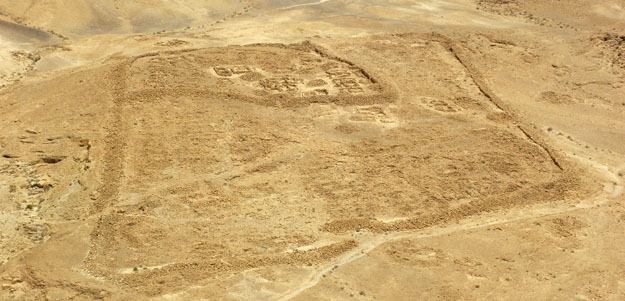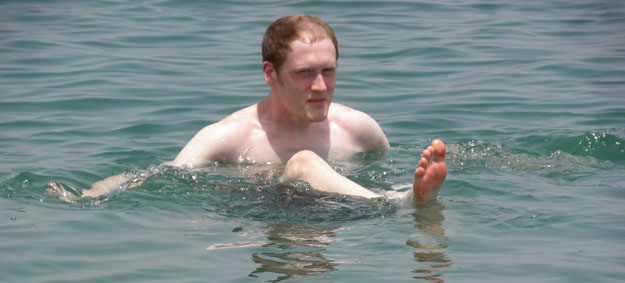MITZPE RAMON, ISRAEL — Today we took the usual weekly shabbat break from fieldwork and spent the day as tourists.

Micah and Andrew exploring blocks of halite (rock salt -- sodium chloride) exposed on the slopes of Mount Sodom in the Dead Sea Rift Valley. This salt is part of a massive diapir (a "salt dome") which rose from below and punched its way up through the overlying sediments because of its relatively low density.

One of the remarkably preserved Roman fortified camps from the siege of Masada, 73-74 CE. This is a view down from the northern extremity of the Masada plateau.

The obligatory "student floating in the Dead Sea" photograph. This time the brave soul is Andrew Retzler.

Mamshit is the site of a Nabatean city on the Incense Route ("Spice Road") from Asia to the West. It flourished from the middle of the first century to the middle of the seventh century CE. It is located a few kilometers east of the modern Israeli city of Dimona.
About Mark Wilson
Mark Wilson is an emeritus Professor of Geology at The College of Wooster. He specializes in invertebrate paleontology, carbonate sedimentology, and stratigraphy. He also is an expert on pseudoscience, especially creationism.






